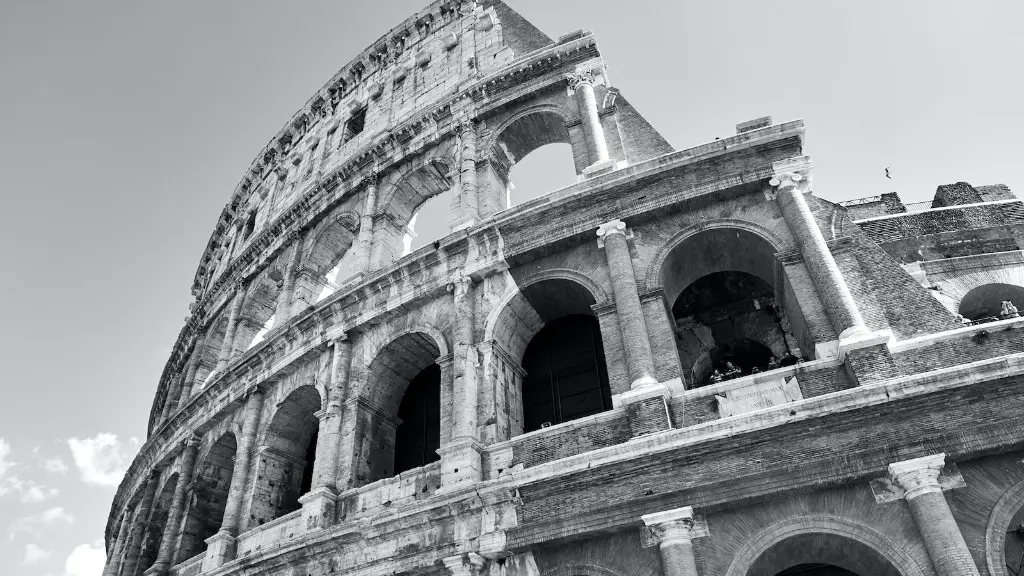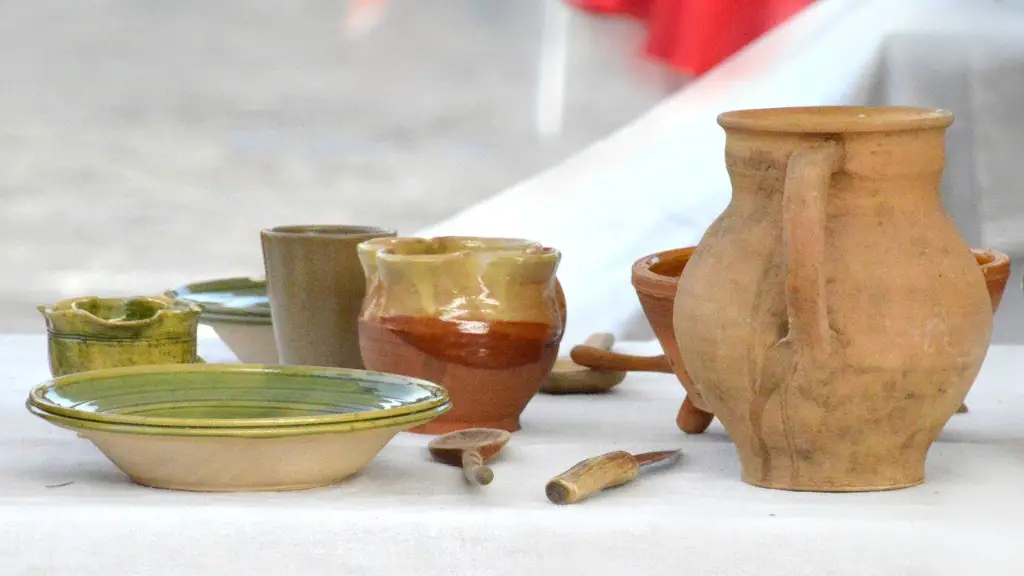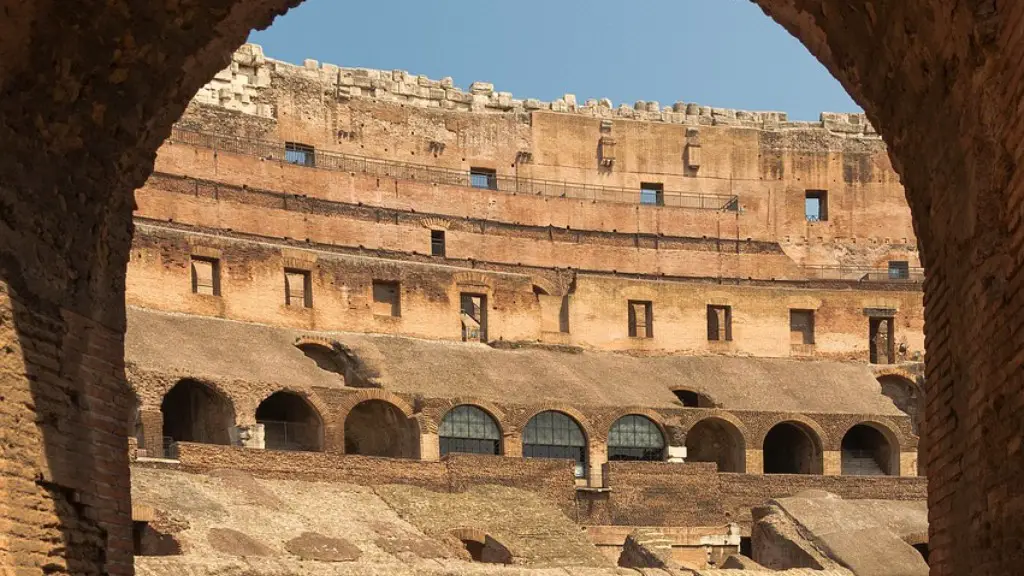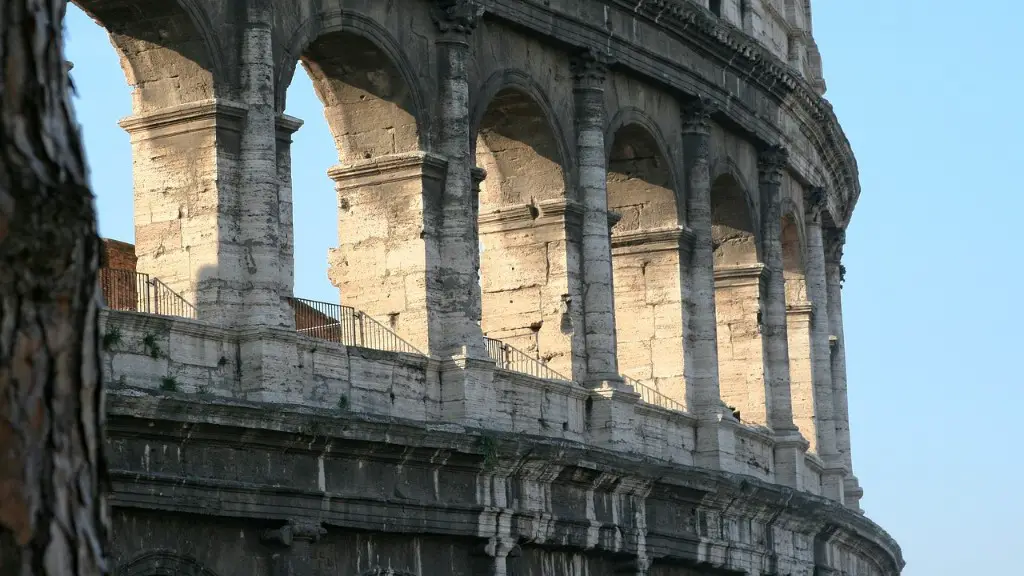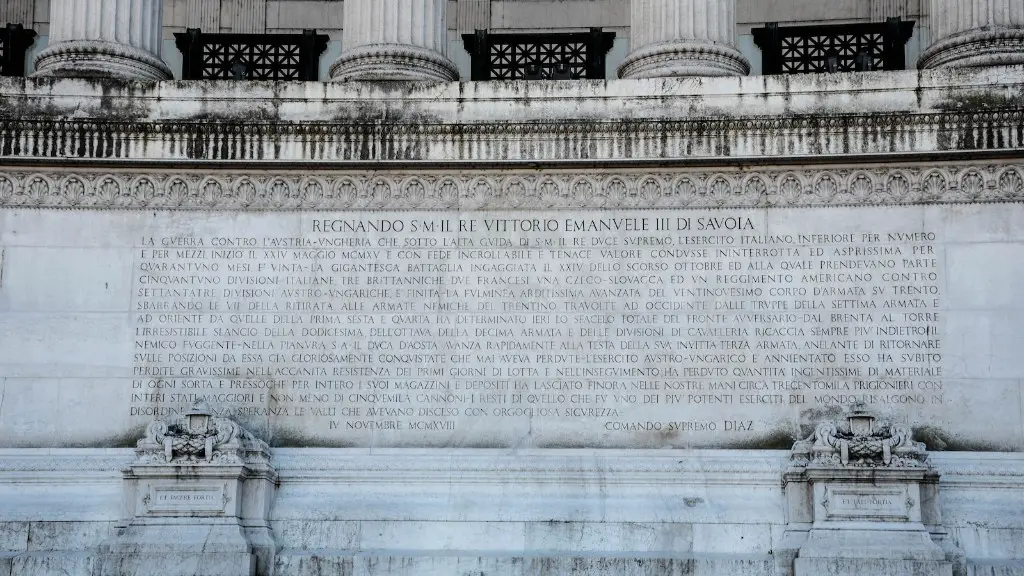Temples have always been a central feature of many ancient civilizations, and Rome was no exception. The Romans’ elaborate temples formed part of their culture and faith and were often seen as physical manifestations of their relationship with the gods. As such, they played a significant role in Roman society.
In Rome, temples were used primarily as places of worship where the gods were praised and sacrifices were made. People would come to the temple to perform various rituals and offerings, such as libations, prayers, and animal sacrifices. These rituals were believed to be beneficial for both the gods and people. Temples were also used for other religious activities, such as purification ceremonies, divination rituals, and religious festivals.
The temples of ancient Rome were usually large and elaborate, often built using stone and marble. They were typically located in prominent locations around the city and were designed to represent the power and grandeur of the gods. Many of these temples also served as landmarks, helping travellers to orient themselves as they navigated the city.
The architecture of the temples also reflected their purpose. They were often decorated with ornate sculptures and artwork, and sometimes even with large statues of the gods. These statues represented the gods’ power and authority, and were symbols of the Romans’ deep reverence for them. Additionally, temples were often inscribed with words of reverence and devotion to the gods.
The Romans also used their temples as a source of political power. The most prominent and powerful temples often belonged to the most powerful gods, such as Jupiter and Mars. These temples also served as a place for political meetings, where leaders made important decisions or announced new laws. Even the army would gather in temples to receive instructions from the gods.
The temples of ancient Rome had a profound impact on the religion and culture of the time. They served as a physical representation of the Romans’ faith in their gods and provided a place for the people to come together and share in their spiritual beliefs.
Sacrifices and Offerings
Sacrifices and offerings were the primary rituals practiced in the temples of ancient Rome. People would bring offerings of food, drinks, animals, and other materials to the temple as tributes to the gods. These offerings were believed to be beneficial for both the gods and the people.
The most commonly offered sacrifice was a gifted animal, usually a bull or goat. These animals were put to death, as it was believed that their life was a sacrifice to the gods. Other offerings included coins, incense, grains, and fruits. It was not uncommon for devotees to make vows in exchange for favours from the gods.
Another type of sacrifice was the holocaust, in which an offering was burned at the temple. People would bring offerings of wax, spices, and other objects which were then laid on an altar and burned in an effort to please the gods. This practice was very common as it was believed to be the only way to ensure the gods would hear their prayers.
Rituals of purification, such as washing and anointing, were also regularly practised at the temples. People would go to the temples to cleanse themselves and purify their souls in preparation for offering their sacrifices to the gods.
Festivals and Celebrations
The temples of ancient Rome were also used for festivals and celebrations. Special celebrations were held in honour of the gods, most notably the Saturnalia and Ludi Romani. During these celebrations, sacrifices were offered and processions were held around the temple. Prayers, sacrifices, and feasting were all common activities during the festivities.
These festivals were often very elaborate and colourful. People would dress up in their finest clothes and gather at the temple to celebrate. The streets of Rome would be decorated with flags, banners, and evergreen trees in honour of the gods. The festivities would last for days and end with a grand ceremony at the temple.
The temples of Rome also served as a place for mourning after the death of a family member or public figure. People would gather in the temples to remember the deceased and would make offerings and sacrifices in their honour.
Political Arena
As well as being used for religious purposes, the temples of ancient Rome served as a place for political meetings and deliberations. The Senate often met in the temples to pass laws and make decisions.
In addition, the military would often gather in the temples to seek the gods’ advice before marching into battle. The commanders would make offerings and sacrifices, asking the gods to grant them victory in battle.
The temples were also a place where political messages were delivered. High-ranking members of the government could make speeches from the temple steps to announce laws and give advice to the citizens.
Temples were one of the most important aspects of ancient Roman society and served many purposes. They were places of worship, celebration, and political debate, and they played a central role in the lives of the people.
Religion and Belief
The temples of Rome were vital to the religion and beliefs of the Romans. For them, the gods were an ever-present reality and the temples were places of reverence and devotion. People believed that the gods had control over the world’s fate and the temple was the place to honor and communicate with them.
The priests, who were highly respected members of society, played an important role in the temples. They were responsible for maintaining the rituals and ceremonies, making offerings, and interpreting the divine will of the gods. They were also responsible for maintaining records of the offerings and sacrifices made, so that the gods could be remembered and honoured.
The temples of Rome were also used to share religious thought and teachings. Members of the clergy, philosophers, and the general public could come together and discuss important spiritual concepts, such as the nature of the gods.
The temples of Rome were more than just places of worship. For the Romans, these grand structures were places of reverence, celebration, and spiritual contemplation. They were essential to their religion and helped shape their beliefs and culture.
Legacy
The temples of ancient Rome have left a lasting legacy on the world today. They continue to be seen as inspirational and powerful symbols of faith, tradition, and architecture. The grand structures of the Roman temples still stand as a testament to the power and influence of the gods in Roman society.
The legacy of the Roman temples is still evident in today’s world. Many popular tourist attractions and places of worship have been influenced by the culture and architecture of the Roman temples. The grandeur of the structures, the intricate artwork, and the reverence of the gods are all aspects that have been passed down through the generations.
The temples of ancient Rome will continue to be celebrated as a part of our cultural heritage. They are a reminder of the power and influence of the gods on daily life, and also of the importance of religious rites and rituals.
